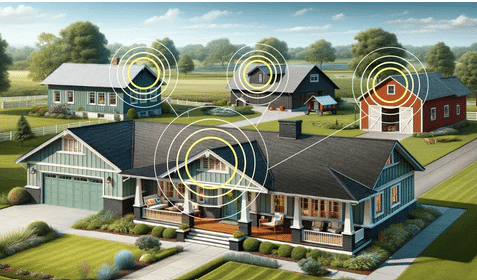
The Z-Wave Alliance was founded with a core mission of developing the Z-Wave Technology Platform. The Platform continues to evolve thanks to the work of our technical working groups. As we near the one-year anniversary of the completion of the Open Source Project what better way to mark this milestone than to talk with this year’s Outstanding Contributor for Open Source, Andrew Hayden.
Andrew Hayden is a Device Engineer at Alarm.com, a founding member of the Z-Wave Alliance when it became a Standards Development Organization. At Alarm.com, he is primarily focused on controller systems for devices such as lights, locks, and thermostats and he has been heavily involved in the Open Source Working Group from its inception. To hear Andrew tell it, the formation of the Open Source Working Group was not only a significant milestone, but it also fell right in his wheelhouse.
“The creation of the Open Source Working group itself was a big thing. Being able to see the source code is an important development and a big benefit to participating in the Open Source Working Group. The code can run on x86, which is the CPU architecture most personal computers use. Developers can emulate the whole Z-Wave network on a laptop. The Open Source Project lets you run this self-contained environment with essentially the same code that would be running on a real device,” said Andrew.
Over the last year, the Open Source Working Group has been able to dive deep into the code to enhance both debugging and the overall development process. Its structure allows members to contribute directly to the codebase, empowering them to address specific needs and enhancements. Requests submitted by members are reviewed by community leaders, discussed collectively, and implemented.
As Andrew explains, the Alliance is not just about developing technology but also about creating a community where members can collaborate, share insights, and drive innovation.
“Being involved in the working groups not only spurs technical conversations but also leads to quicker consensus and implementation of new features and standards,” said Andrew. “It’s easy for members to start participating in our conversations based on their experience with Z-Wave. When they’re comfortable, members can make small contributions like creating bug reports, reviewing code, and testing fixes. Eventually, they can make larger contributions, like whole new features. It all helps move the protocol forward.”
Andrew’s involvement has not only benefited him through networking and camaraderie with other developers but also influenced Alarm.com’s internal processes. He shares, “I’ve found working with the Open Source Project utilizing a virtual testing environment enhances product development and allows for more efficient testing of new features and devices. We’re looking at similar opportunities to supplement our existing internal testing infrastructure, there are exciting possibilities.”
If you’re ready to start contributing your time and talents to the Z-Wave Alliance, check out the committees and working groups or contact administration@z-wavealliance.org.

